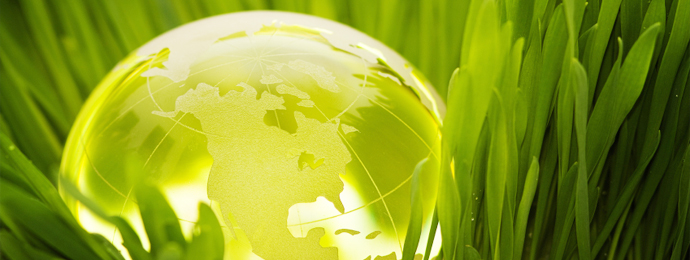
Over the years, I’ve watched “green” printing practices evolve from being an afterthought to becoming a fact of life, an expectation. Like it or not, sustainability has become an underlying theme that has grown in importance throughout the last decade. Clients today expect and demand sustainable choices. And, as the designer, I have the power to help clients find better solutions which will help them reach their sustainability goals without having to sacrifice or compromise on the “wow-factor.” Eco-consciousness doesn’t have to get in the way of the quality or creativity of the final product. There are many ways to approach a responsibly printed solution that you can be proud of.
The digital divide
As a designer, I often hear that the solution for acting sustainably is to “Go digital!” As much as I love technology and think emailers or blog posts are a viable and worthy option to get your message out there, “going digital” isn’t always the answer and there are still drawbacks to this method. Did you know that 70% of the toxic waste in U.S. landfills comes from discarded electronics? Or that it takes 539 pounds of fossil fuel, 48 pounds of chemicals, and 1.5 tons of water to manufacture just one computer and monitor? (Visit dosomething.org to learn more.)
The print dilemma
To be fair, printing also has its set of drawbacks. It is estimated that worldwide over 45 trillion pages are printed each year and that 30% of print materials are never “consumed” or used. However, I think that this is a problem that can be addressed with smarter design choices. Paper gets a bad rap because not everyone treats it equally. Paper is actually very eco-concious. It is derived from renewable resources, is made with high levels of renewable energy and is recyclable. However, it is how we use it that makes it a a good or bad choice. One way to make sure that your printed materials are having a positive impact on the environment is to make sure that your printed materials are relevant. They should be bold and brilliant, emotional and intriguing, useful and enduring. The goal is to design and print materials that matter and have staying power.
Some “green” options to think about when designing your next piece
When planning and designing your print materials, you should consider the following tips:
1. Choose recyclable, renewable, and biodegradable materials. The easiest way to do this is by making sure that your paper has been recycled. There is a wide assortment of recycled papers on the market in various grades, finishes and colors. The paper you choose should ultimately have between 10-30% of post-consumer waste content. As an even greener choice you can also think about using inks made from soy and vegetable oils. But remember this can sometimes cause an increase in cost and the performance of these inks may not be consistent with conventional methods.
2. Greener formats. Reduce the amount of paper and other materials used overall by designing smaller and smarter pieces. Certain sizes and formats are more efficient to print and mail. Sometimes, trimming just 1-inch off of the height of a piece can save you significant paper waste without compromising the integrity of a design or a message. Simplicity, can also be a great strategy. For example printing a postcard that directs you to a website can be more efficient than printing an oversized or lengthly printed piece that includes all of your message. Directing your audience to your website entices the reader to learn more and increases your web traffic statistics.
3. Take a look at type. When talking text, consider not only your ink, but also your font choices. Light serif-based fonts such as Galliard are not only easy to read and elegant, but are also considered to be more “ink efficient” when compared to bold, compact fonts such as Compacta.
4. Greener mailing lists. Another simple and easy way to cut down on your carbon foot print is to think about who you are mailing to. Try to narrow down your list and make it more targeted. Instead of mailing to everyone in a company, do some research and find out who the right contact is for your particular campaign. Make sure there are no duplicates or undeliverable addresses, as these both contribute to waste.
Making “green” decisions on printing is about more than simply choosing recycled paper or soy inks, smart sustainable printing solutions take into consideration almost every aspect of the design and printing process. Sure it involves paper and ink, but it also involves the process.
~ Bethany Howell, art director

